Case : Noor, a young student, was trying to demonstrate some properties of light in her Science project work. She kept 'X' inside the box (as shown in the figure) and with the help of a laser pointer made light rays pass through the holes on one side of the box. She had a small butter-paper screen to see the spots of light being cast as they emerged.
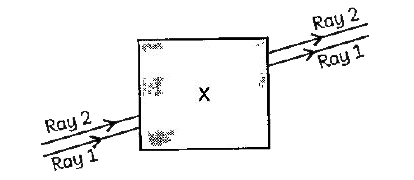
If the object inside the box was made of a material with a refractive index less than 1.5 then the :
lateral shift of the rays would have been less.
lateral shift of the rays would have been more.
lateral shift of the rays would remain the same as before.
there is not enough information to comment on any of the above statements
The correct Answer is:A
The lateral shift depends on the refractive index of the medium and thickness of the slab. The greater the refractive index of the second medium, greater would light bend and hence greater would be the lateral shift.
Similar Questions
Noor, a young student, was trying to demonstrate some properties of light in her Science project work. She kept ‘X’ inside the box (as shown in the figure) and with the help of a laser pointer made light rays pass through the holes on one side of the box. She had a small butter-paper screen to see the spots of light being cast as they emerged.
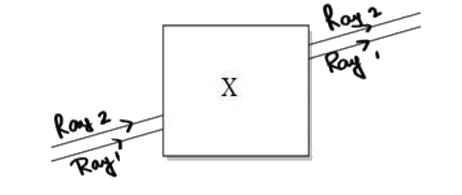
What could be the ‘X’ that she placed inside the box to make the rays behave as shown?
View SolutionNoor, a young student, was trying to demonstrate some properties of light in her Science project work. She kept ‘X’ inside the box (as shown in the figure) and with the help of a laser pointer made light rays pass through the holes on one side of the box. She had a small butter-paper screen to see the spots of light being cast as they emerged.
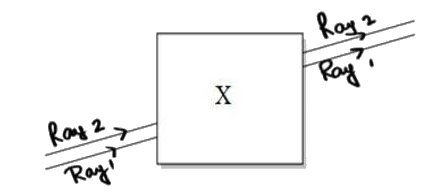
She measured the angles of incidence for both the rays on the left side of the box to be 48.6∘. She knew the refractive index of the material ‘X’ inside the box was 1.5. What will be the approximate value of angle of refraction?
(use the value: sin 48.6∘≈0.75)
View Solution
Knowledge Check
Case : Noor, a young student, was trying to demonstrate some properties of light in her Science project work. She kept 'X' inside the box (as shown in the figure) and with the help of a laser pointer made light rays pass through the holes on one side of the box. She had a small butter-paper screen to see the spots of light being cast as they emerged.
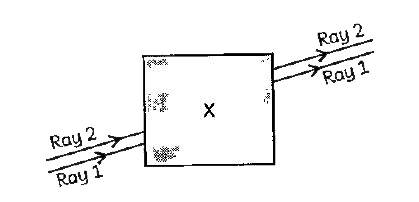
What could be the 'X' that she placed inside the box to make the rays behave as shown?Aa converging lensBa parallel-sided glass blockCa plane mirrorDa triangular prismCase : Noor, a young student, was trying to demonstrate some properties of light in her Science project work. She kept 'X' inside the box (as shown in the figure) and with the help of a laser pointer made light rays pass through the holes on one side of the box. She had a small butter-paper screen to see the spots of light being cast as they emerged.
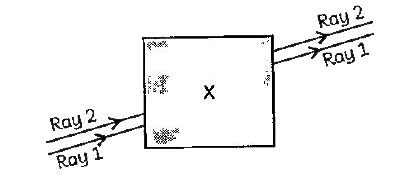
She measured the angles of incidence for both the rays on the left side of the box to be 48.6∘ . She knew the refractive index of the material 'X' inside the box was 1.5. What will be the approximate value of angle of refraction? (use the value of sin48.6∘≈=0.75)A45∘B40∘C30∘D60∘Case : Noor, a young student, was trying to demonstrate some properties of light in her Science project work. She kept 'X' inside the box (as shown in the figure) and with the help of a laser pointer made light rays pass through the holes on one side of the box. She had a small butter-paper screen to see the spots of light being cast as they emerged.
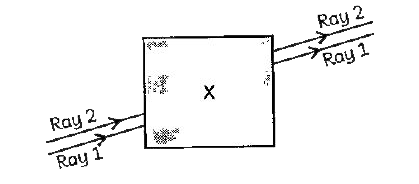
Her friend noted the following observations from this demonstration:
(I) Glass is optically rarer than air.
(II) Air and glass allow light to pass through them with the same velocity.
(III) Air is optically rarer than glass.
(IV) Speed of light through a denser medium is faster than that of a rarer medium.
(V) The ratio: sin of angle of incidence in the first medium to the ratio of sin of angle of refraction in the second medium, gives the refractive index of the second material with respect to the first one.
Which one of the combination of the above statements given below is correct.A(II), (IV) and (V) are correctB(III) and (IV) are correctC(I), (IV) and (V) are correctD(III) and (V) are correct.
Noor, a young student, was trying to demonstrate some properties of light in her Science project work. She kept ‘X’ inside the box (as shown in the figure) and with the help of a laser pointer made light rays pass through the holes on one side of the box. She had a small butter-paper screen to see the spots of light being cast as they emerged.

Her friend noted the following observations from this demonstration:
i. Glass is optically rarer than air.
ii. Air and glass allow light to pass through them with the same velocity.
iii. Air is optically rarer than glass.
iv. Speed of light through a denser medium is faster than that of a rarer medium.
v. The ratio: sin of angle of incidence in the first medium to the ratio of sin of angle of refraction in the second medium, gives the refractive index of the second material with respect to the first one.
Which one of the combination of the above statements given below is correct.
View SolutionA beam of parallel light rays is incident through the holes on one side of a box and emerges out through the holes on its opposite side as shown in the diagram below:

Which of the following could be inside the box?
View SolutionA beam of light is incident through the holes on side A and emerges out of the holes on the other face of the box as shown in Figure. Which of the following could be inside the box ?
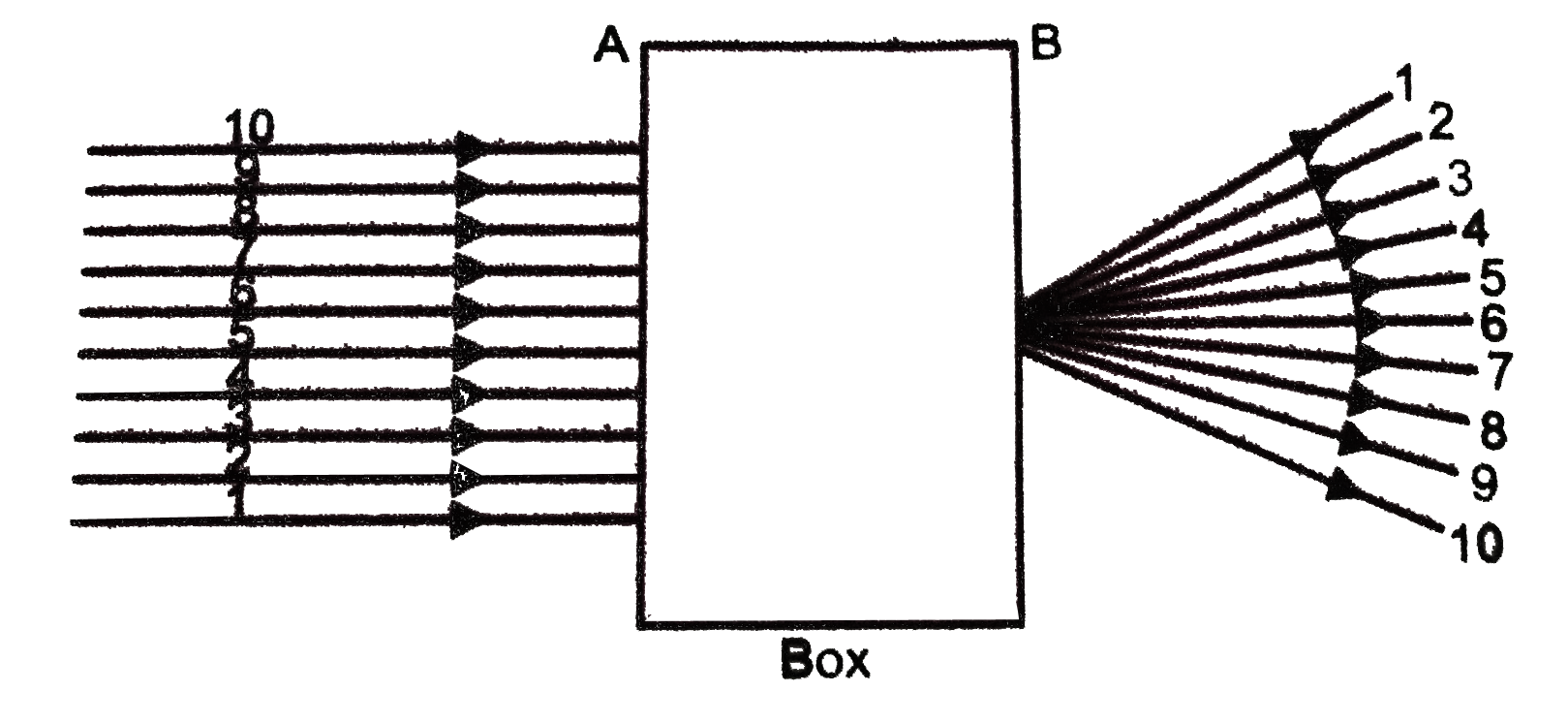
View SolutionFor a light ray passing through a prism
View SolutionThomas Young demonstrated interference of light in
View Solution
